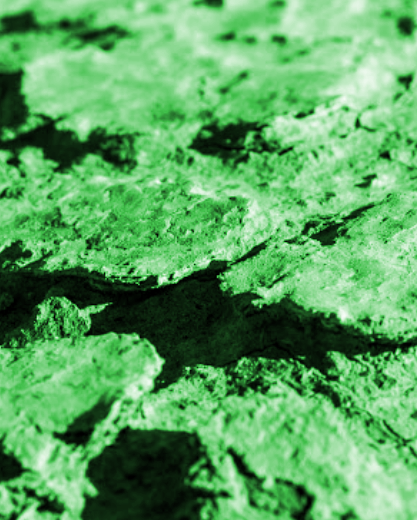Crusts crucial to water supplies
 Tiny organisms that cover desert soils appear to be critical to supporting the world’s shrinking water supplies.
Tiny organisms that cover desert soils appear to be critical to supporting the world’s shrinking water supplies.
‘Biocrusts’ are a rich assortment of mosses, lichens, cyanobacteria, and microscopic organisms such as bacteria and fungi that live on the surface of dryland soils. Drylands, collectively, are the world’s largest biome.
A global meta-analysis led by UNSW scientists shows these biocrusts are vital to supporting water supplies.
“Biocrusts are critically important because they fix large amounts of nitrogen and carbon, stabilise surface soils, and provide a home for soil organisms,” says UNSW’s Professor David Eldridge.
“But we still have a poor understanding of just how biocrusts influence hydrological cycles in global drylands.
“Accounting for biocrusts and their hydrological impacts can give us a more accurate picture of the impacts of climate change on dryland ecosystems and improve our capacity to manage those effects,” Prof Eldridge said.
For the study, the team assembled and then analysed the largest ever global database of evidence on the effects of biocrusts on water movement, storage and erosion, focussing on drylands.
“Our emphasis was on dryland soils because biocrusts are often the dominant surface covering on these soils, particularly during dry times,” Prof Eldridge says.
Dr Samantha Travers helped pore over more than 100 scientific papers published over the past 30 years.
“The global literature on biocrust effects on hydrology has often been conflicting, preventing us from making broadscale recommendations on how to manage them to manage water,” Dr Travers says.
Importantly, the researchers showed that globally, the presence of biocrusts on the soil surface reduced water erosion by an average of 68 per cent.
“Cyanobacteria in the crusts secrete organic gels and polysaccharides that help to bind small soil particles into stable surfaces. Mosses in the crusts also trapped water and sediment on the soil surface, preventing the removal of soil particles,” Dr Travers said.
Although biocrusts reduced the infiltration of water into the soil, they tended to increase water storage in the uppermost layers.
“This upper layer is where most of the nutrients and microbes are found – it is a critical zone for plant production and stability in dryland soils,” Prof Eldridge said.
“More water in the upper layers means greater productivity and stability.
“Many people in drylands rely on pastoralism for their livelihoods, so the capture and use of water is critically important in these water-limited environments.
“Anything that alters the hydrological balance in drylands has the potential therefore to affect millions of people, hence the importance of these tiny surface communities.”
A major problem for sustainable management of drylands is overgrazing by livestock.
“Trampling by sheep and cattle breaks up the crust, destabilising the soil surface and leading to increased water erosion – effects that are supported by our global analyses,” Prof Eldridge said.
“Preventing overgrazing by livestock is critical if we are to prevent the loss of biocrusts, but until recently, the magnitude of the effects have not been known.
“The results of this work will be incorporated into global water balance and soil loss models so that managers and governments have a better understanding of the implications of losing biocrusts on the world’s dwindling water supplies.”







 Print
Print